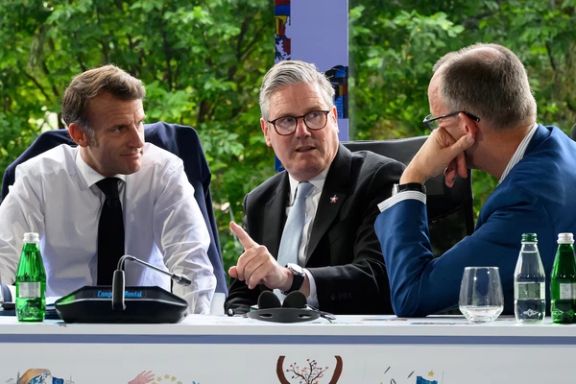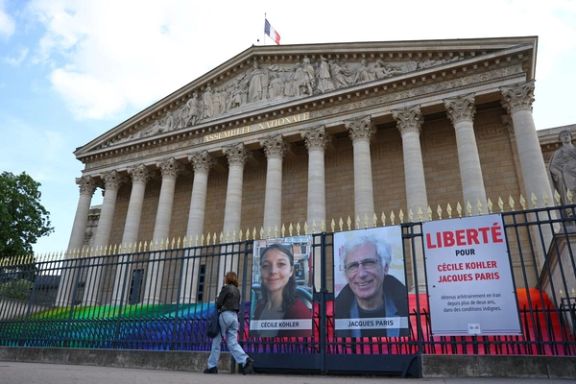The end of mediation: snapback turned the page on Iran-Europe relations

Europe is no longer a mediator but a co-architect of US-led pressure on Iran, and the relationship post-snapback is likely to harden into a more openly adversarial phase.

Europe is no longer a mediator but a co-architect of US-led pressure on Iran, and the relationship post-snapback is likely to harden into a more openly adversarial phase.
The reactivation of the so-called snapback of UN sanctions in late September dismantled the last remaining elements of the 2015 nuclear deal.
More than a technical step, snapback crystallizes a strategic shift already underway in Europe.
Since 2006, the E3 troika of countries Britain, France and Germany had acted less as mediators and more as facilitators—indeed supporters—of the US-led international sanctions regime.
But since Russia’s invasion of Ukraine in 2022 and Tehran’s deepening military partnership with Moscow, the E3 are no longer content to cushion Washington’s pressure. They are emerging as full partners, even co-architects, in Western strategies to contain Iran.
The future of the relationship will hinge on three intertwined spheres: the security lens through which Europe increasingly sees Iran, the economic constraints shaping both sides’ room for maneuver and the regional military dynamics that could force Europe into starker choices than in the past.
'Hostage diplomacy'
Security concerns now dominate Europe’s approach.
Iran’s continued use of “hostage diplomacy”—the arrest and prolonged detention of foreign nationals for political leverage—has hardened attitudes across European capitals.
The ordeal of French citizens Cécile Kohler and Jacques Paris, detained for more than three years on espionage charges before their release in a prisoner swap on 5 November 2025, remains emblematic.

Today, both are still confined inside the French Embassy in Tehran, awaiting the possibility of returning to France after the January 2026 trial of Mahdieh Esfandiari, who herself remains stuck inside the Iranian Embassy in Paris.
Their case highlighted a pattern Europe now sees as coercive diplomacy rather than isolated incidents.
In the United Kingdom, the continuing detention of British travelers Lindsay and Craig Foreman since January 2025—arrested by the IRGC’s intelligence service and accused of espionage, allegations they strongly deny—and their decision to begin a hunger strike have sparked similar outrage and further eroded what little goodwill remained.
Foiled operations
Compounding these tensions is mounting evidence of Iranian covert activity across Europe.
Security agencies in France, Germany, Britain and other states have disrupted plots involving Iranian operatives or Iran-linked criminal networks tasked with surveilling or targeting dissidents, journalists, and even state officials.
A joint statement by fourteen Western countries in July 2025 revealed that more than twenty such operations had been foiled in the UK alone since 2022.
Tehran dismisses these accusations as fabrications meant to justify European hostility, but the effect has been unmistakable: Europe is prioritizing deterrence, tightening security coordination, and preparing for a long phase of defensive diplomacy that could include further expulsions of Iranian diplomats.
Declining trade
Economic considerations offer no clearer path to de-escalation.
Europe’s decision to reimpose sanctions through the snapback mechanism has sharply curtailed Iran’s access to technology, investment, and high-value markets at a moment of intense domestic economic strain.
Total trade in goods between the EU and Iran reached €4.5 billion in 2024—€0.8 billion in imports and €3.7 billion in exports. For now, European companies already wary of secondary US sanctions are expected to continue withdrawing from the Iranian market.
Yet some ambiguity persists. European policymakers recognize that a future diplomatic breakthrough between Washington and Tehran may require a rapid shift toward selective re-engagement, particularly in the energy sector.
Iran’s vast reserves remain attractive in a context of tight global supply, and several European governments are careful not to close off their options entirely.

Nuclear dossier
These contradictions are now playing out in Vienna.
Ahead of the November 19–21 IAEA Board of Governors meeting, the E3 has drafted a resolution demanding that Iran halt uranium enrichment and reprocessing, based on Director General Rafael Grossi’s latest reports on undeclared nuclear activities.
Iran rejects the initiative as illegitimate, arguing that the expiration of Resolution 2231 in October 2025 renders such demands meaningless.
Europe, meanwhile, finds itself in an awkward dual role—as a sanctions enforcer aligned with Washington and a champion of multilateral oversight.
This duality is likely to persist and underscores the strategic limbo in which Iran-Europe economic relations now operate.
The most explosive dimension lies in the regional military arena, where the prospect of an Iran-Israel confrontation could force Europe into clearer and more divisive positions.
Russia factor
The snapback reimposes restrictions on Iran’s ballistic missile program at a time when Tehran’s capabilities have grown significantly through cooperation with Russia.
Since 2022, Iran has been linked to supplying drones and munitions for the war in Ukraine while simultaneously deepening cooperation with Moscow in technological, defense, and nuclear-related fields—an exchange formalized in a 20-year strategic partnership signed on 17 January 2025 and ratified by Iran on 21 May 2025.
By refusing to implement punitive snapback measures, Moscow has provided diplomatic cover for Tehran at the UN, shielding it from further action and complicating Europe’s efforts to exert pressure through multilateral channels.
For Europe, the tightening Iran-Russia axis represents both a regional threat and an extension of the Ukraine war into the Middle East.
Shadow of war
A major confrontation between Iran and Israel—whether through direct strikes or proxy escalation—would have immediate implications for European security, energy supplies, and domestic politics.
European states might respond by increasing arms deliveries to Israel or imposing further sanctions on Iranian entities, yet internal divisions, particularly over Israel’s conduct in Gaza and wider regional policy, could hinder a unified approach.
Europe’s efforts to assert strategic autonomy run into hard limits whenever crisis gathers in the Middle East, where US intelligence, deterrence frameworks, and diplomatic weight remain indispensable.
The months ahead will determine whether the two sides can still find a path to de-escalation. The IAEA deliberations, Iran’s nuclear posture, and the evolution of Iran–Russia military cooperation will all serve as key indicators.
Absent meaningful diplomatic openings, the likely trajectory is one of deepening antagonism and tighter alignment between Europe and the United States on measures to contain Iran.
Whether diplomacy can rise above coercion in a fragmented geopolitical landscape remains the central uncertainty shaping the future of Iran-Europe relations.